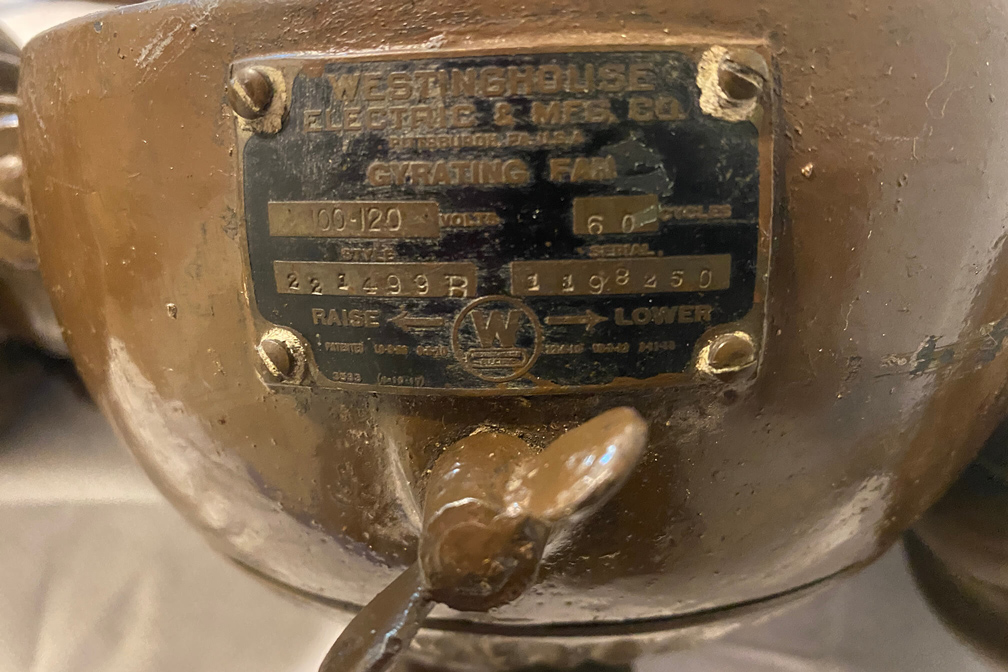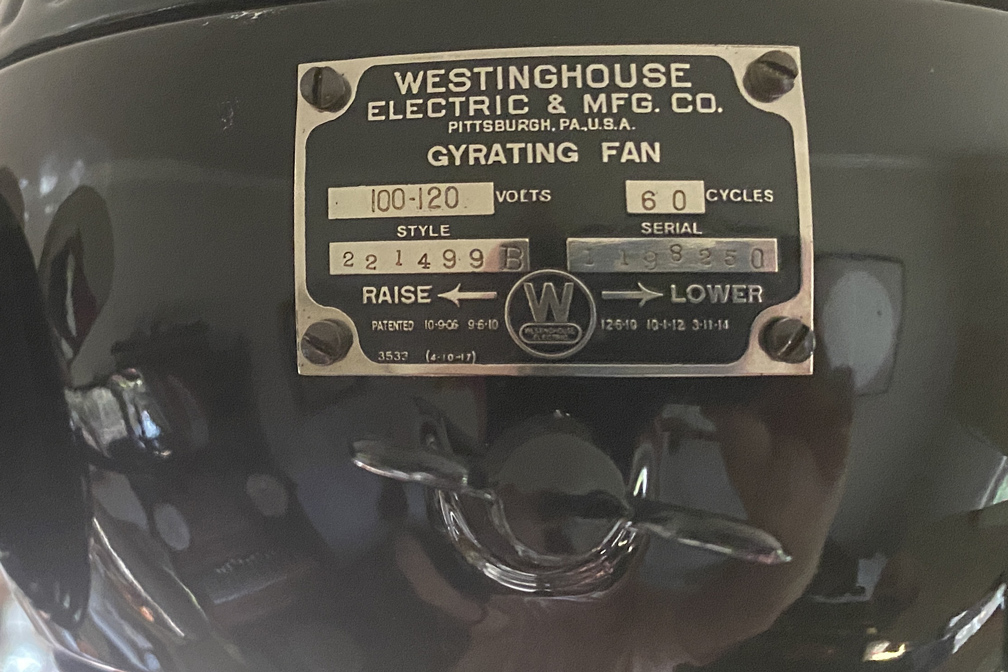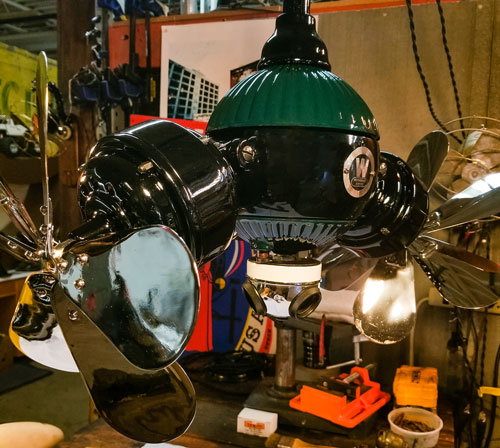
Circa 1917 Westinghouse Gyrating (Gyro) Fan
Discovering a Hidden Treasure:
Unearthing a Rare Antique Westinghouse Gyro Ceiling Fan
Restoration and Revival: Breathing New Life into a Timeless Antique Masterpiece
Antique fans, like the captivating Westinghouse gyro ceiling fan in my girlfriend's parents' antebellum breakfast room, can stop people in their tracks. This extraordinary fan was housed within a stunning southern classic home from the early 1900s, complete with spacious rooms, high ceilings, leaded windows, and exquisite wood paneling. The Westinghouse gyro fan was a true marvel, featuring two small fans suspended in tandem from an elongated pole. When activated, each fan spun individually, while both rotated around the pole's axis.
With each visit, I eagerly dashed to the breakfast room to switch on this antique treasure, entranced by its mesmerizing motion. Inevitably, someone would soon enter, turning it off with a stern reminder of the potential danger from a dislodged blade or the aged wiring.
I believe I was the only one who ever turned the fan on, and I never missed an opportunity to do so.
A few years later, when my in-laws decided to sell their house, I knew I couldn't let the antique Westinghouse gyro fan slip away. Despite my mother-in-law's reservations and my wife's disbelief, they permitted me to replace the fan with a modern one. I was overjoyed and planned to install it in our home immediately.
However, it wasn’t that straightforward. The fan’s original paint, whether one color or several, had been obscured by an unattractive shade of brown, and the century-old wiring was exposed in places. A comprehensive restoration was necessary before my wife would agree to display it in our home.
I joined an antique fan collectors club and discovered that only a few experts in the country could restore a fan like this, costing thousands of dollars and taking up to two years to complete. Undeterred, I connected with a renowned restorer in Clyde, North Carolina, who had more experience with antique fans than anyone else.
After discussing the project, he connected me with a team that coordinated the restoration. Over the course of nine months, multiple specialists worked on the fan, reviving the tags, rewinding the motors, crafting new blades, and stripping away the old paint. They meticulously applied automotive paint in the original Westinghouse colors, ensuring the fan's breathtaking transformation.

A Nine-Month Journey: The Intricate Process of Restoring a Classic
The arduous restoration process of this antique Westinghouse gyrating fan involved several key steps:
The outdated brown paint was carefully removed, revealing the original metal, which was then primed and repainted using automotive-grade paint in the historically accurate dark green and black color scheme, a palette used by Westinghouse at the time
Every nut and bolt, even those hidden within the fan, was thoroughly cleaned and polished
The two small motors were entirely rebuilt, a labor-intensive and costly process that included rewinding each motor
The worn spring responsible for the fan's spinning motion was recreated
The blades were disassembled, and new wings were crafted. Once reassembled, they were nickel-plated and balanced
The two small tags were delicately stripped of old paint, carefully smoothed, nickel-plated, and repainted
A period-appropriate light cluster was added to complete the fan's vintage look
Reassembling the fan required almost 40 hours of labor at $135/hour, in addition to the extensive work already completed. The result was a beautifully restored Westinghouse antique fan, fully revived and ready for display.
The Ultimate Question: Assessing the Value of Restoring a Timeless Treasure
Was the effort worth it? Absolutely! I love the fan and hope it remains in our family for at least another century. I didn't restore it to sell it, so its current value doesn't concern me, although I've heard I could potentially sell it for more than the restoration cost.
As for dating the fan, I estimate it's from around 1917. Westinghouse didn't track manufacturing dates by serial number, but they did have a dating method. Each gyro fan had a two-digit number imprinted on one set of blades, representing the year of production. Interestingly, my fan has two numbers: '16' on one set and '17' on the other. This suggests it was likely manufactured near the end of 1916 or the beginning of 1917 – quite a long time ago, indeed.
Today, it hangs over the piano in our music room...
Side-by-Side
Use the slider to compare the tag/body of the fan.


